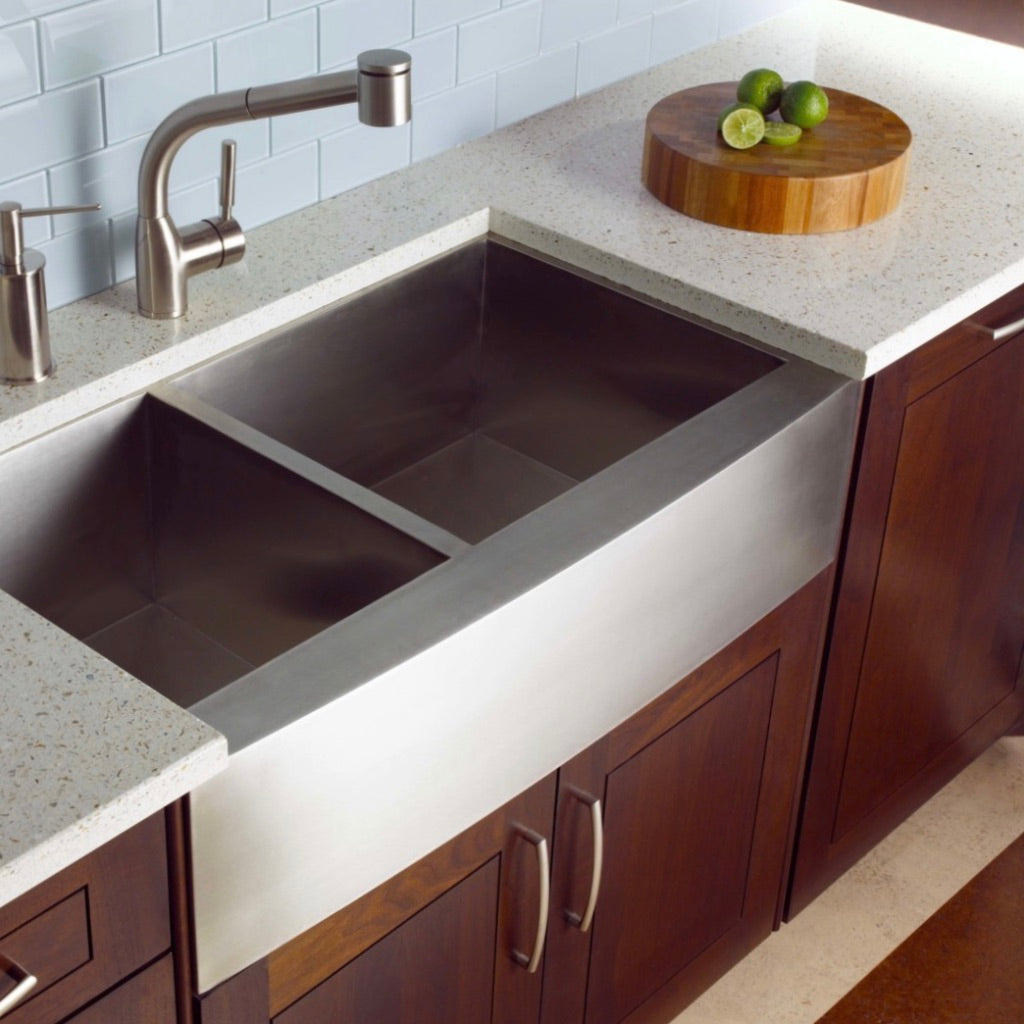“I think what’s really incredible is to witness this newfound passion and interest in makers. Certainly here in New York and at this other level in Brooklyn.”
—
Since 2003, IceStone has been selling, promoting and advocating for safe and sustainable countertops made of recycled glass and cement. “This isn’t just a product with recycled glass; it’s really a triple bottom line company,” asserts IceStone Marketing Manager, Sarah Corey. “It’s been really incredible to see our own industry — the construction industry — moving away from purely talking about ‘Green,’ [to] getting a little more substantial.” Ms. Corey, who joined IceStone in 2007 shortly after graduating from the University of Vermont, led the NYSOM team on a tour of the company’s Brooklyn Navy Yard factory. We saw firsthand the the commitment of this company — a certified B Corporation — to its triple bottom line concerns for environment, workers and community.
Called “IceStone” to highlight the glass (ice) and countertop (stone) components of the product, this local factory has made a name for itself among well-established national brands, including Whole Foods, Equinox, Starbucks and Tiffany & Co. A visit in 2011 from Nancy Sutley, the then-Chair of the White House Council on Environmental Quality, has brought IceStone’s Green model to the attention of President Obama.
The surfaces are made in the United States — more specifically, in the company’s Brooklyn Navy Yard factory, nestled between Brooklyn’s Williamsburg and DUMBO neighborhoods. The former center of New York’s maritime manufacturing, the Yard has been converted into a production space for an eclectic array of tenants, including artists and film studios, textile manufacturers, a Brooklyn Grange rooftop farm, e-commerce giant Gilt Groupe, and Kings County Distillery.
The company is one of the few surface materials producers that does not employ any petro-chemicals in its “recipe.” A mixture of 70 percent post-industrial glass, sourced from domestic commercial recyclers, is cleaned, sorted, and, in some cases, dyed. All 15 colors in the repertoire, plus other hues in development, are non-toxic. In contrast, many IceStone competitors use a combination of resins and other materials that are not only imported, but also are sourced from quarries or mines that are not necessarily regulated. IceStone in Forest Fern Photo: IceStone.
IceStone in Forest Fern Photo: IceStone.
The remaining 30 percent of the IceStone matrix consists of a cement mix (cement, pigment, a proprietary additive and water). All of these “ingredients” — so to speak — blend together in a batch that is then cured in kilns. The resulting concrete slabs are calibrated and measured for thickness, and finally polished. Any missing glass pieces or imperfections in the slabs are replaced or repaired with a patching process, giving the flawless industrial product a unique human touch. The final wares are shipped to stone fabricators to be cut for specific projects.
Subsequently, IceStone recycles nearly all of its factory waste. With the help of a water recycling system and a process of thorough separation of all excess materials, the factory recycled roughly 97 percent of the post-production debris at the end of 2012. What makes this company truly exceptional extends well beyond the actual surfaces. While IceStone creates a physically strong and lasting product, its team, leaders and makers are the real foundation. “Tenacity is our greatest strength and constant state [of mind] at IceStone,” declares Ms. Corey. “It's the reason we survived an economic recession, and three years later, Superstorm Sandy.” IceStone’s recovery strategy after Hurricane Sandy exemplifies the company’s resilience, as well as its workers’ investment in the company. An estimated five feet of water flooded the factory, which is located in Zone 1 (the area at highest risk of flooding), and seeped into many of the company’s machines and materials. With no flood insurance, IceStone’s staff banded together, and took turns physically raking through, letting dry and then cleaning every tiny shard of glass. Each piece of equipment was disassembled, repaired and reconstructed. “It really took all of the employees coming together and rolling up their sleeves,” Ms. Corey recounts. The staff collectively own 10 percent of the company, a measure put in place by CEO Dal LaMagna after taking office in October 2011. As a result of the collective efforts, IceStone successfully saved an estimated $1 to $2 million. Though the company lost 5 months of production time as a result, they were able to resume the following April without having made a single furlough or layoff. What kept the company above water, Ms. Corey asserts, was “communicating, both internally and externally, constantly.” She continues, “American manufacturing requires a spirit that doesn't give up or take the path of least resistance, and there's nothing more New York than that fearless, ‘yes we can’ attitude.” One might never know that the space was flooded if they were to visit today. Though located in the East River's Wallabout Bay (in Zone 1), there’s nowhere else IceStone would rather be headquartered. “I love that our factory was built in 1873, and that you can still see original parts of the buildings around here,” says Ms. Corey. She also recognizes that manufacturing in Brooklyn carries certain cache, and admits that “there’s now this increased messaging around where things are made, and IceStone has been benefitting from that certainly.” Perhaps regardless of its location, the brand has gained national acclaim. Just last week, on Earth Day, the U.S. Environmental Protection Agency (EPA) awarded to IceStone an Environmental Quality Award, in recognition of creating “positive environmental and public health impacts in the last year.” It’s a nice acknowledgement for a company that doesn’t rely on prizes to motivate their superlative choices.

Leave a comment